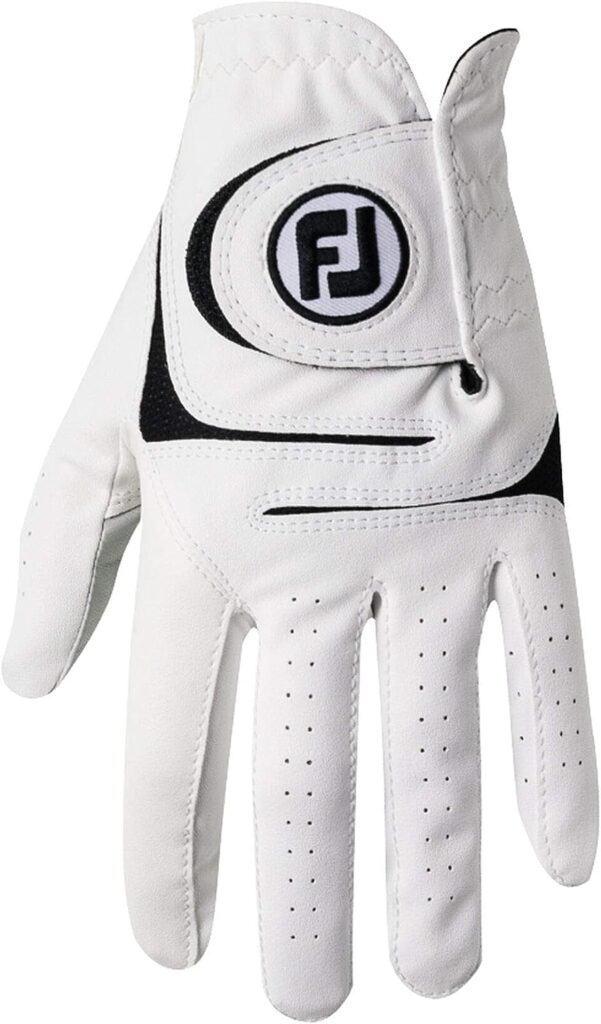Wearing a golf glove is a common practice among both professional and amateur golfers. It serves various purposes, from improving grip to preventing blisters. However, a fundamental question that often arises, especially for beginners, is, “What hand do you wear a golf glove on?” In this comprehensive guide, we’ll delve into this topic and shed light on the factors that influence this decision.
Choosing the Right Hand for Your Golf Glove:

The first consideration when determining which hand to wear your golf glove on is whether you’re a right-handed or left-handed player. In golf, these terms refer to your dominant hand—the hand you use for writing or performing other precise tasks. Here’s a breakdown of the choices:
- Right-Handed Golfer (Left Glove): If you’re right-handed, the traditional choice is to wear your golf glove on your left hand. This is sometimes called your “lead hand.” The reason for this is that the left hand is very important for keeping a strong grip on the club and controlling it during the swing. A glove on the lead hand enhances control and minimizes the risk of the club slipping during the swing.
- Left-Handed Golfer (Right Glove): Conversely, if you’re a left-handed golfer, you should wear your golf glove on your right hand, which is your lead hand in this case. The principle remains the same—maximizing control and grip stability during the swing.
Why Do Golfers Wear Gloves?
Before we get into the details of choosing golf gloves, it’s important to know why people wear them in the first place. Golf gloves are designed to serve several functions:
- Improved Grip: One of the main reasons you wear a golf glove is so that you can get a better grip on the club. This improved grip is especially valuable in adverse weather conditions, such as rain or extreme heat, where sweaty or wet hands can lead to slipping.
- Preventing Blisters: The repetitive motion of swinging a golf club can sometimes cause friction between your hand and the club’s grip, resulting in blisters. Golf gloves act as a protective barrier, reducing the likelihood of developing painful blisters.
- Comfort and Control: Golf gloves are typically constructed from high-quality materials that offer a snug and comfortable fit. This comfort not only reduces the risk of discomfort during play but also contributes to better control over the club.
- Consistency: Wearing a glove ensures that you maintain a consistent grip and feel throughout your round of golf. This precision can make a big difference in how well a shot is made.
Glove Size and Fit:

Choosing the right glove size is essential for maximizing its effectiveness. Ill-fitting gloves can lead to discomfort and hinder your performance on the course. Here are some tips for finding the perfect fit:
- Measure Your Hand: To determine your glove size, measure the circumference of your dominant hand just below the knuckles. Most gloves are available in sizes ranging from small to extra-large.
- Try Before You Buy: Whenever possible, try on golf gloves before making a purchase. This allows you to assess the fit and comfort firsthand.
- Consider Material: Golf gloves come in various materials, such as leather and synthetic blends. The material you choose can impact the fit and feel of the glove.
- Check for Snugness: A golf glove should fit snugly but not be overly tight. You should be able to comfortably close your hand and grip the club without any restrictions.
Weather Conditions and Glove Choice:
Weather conditions can significantly influence your choice of which hand to wear your golf glove on, as well as the type of glove you opt for. Here’s how to adapt to different weather scenarios:
- Hot and Humid Conditions: In sweltering heat and high humidity, both hands can get sweaty. To combat this, consider wearing a glove on your non-dominant hand, providing a balance of grip and breathability.
- Rainy Weather: Rain can make clubs slippery, so wearing a glove on your lead hand (left for right-handed golfers, right for left-handed) becomes even more critical to maintain control.
- Cold Weather: In chilly conditions, wearing gloves on both hands may be necessary to keep your hands warm and maintain flexibility. Look for specialized winter golf gloves designed to provide warmth without sacrificing grip.
Conclusion:
In golf, the answer to the question “What hand do you wear a glove on?” comes down to your dominant hand and personal preference. Right-handed golfers typically wear gloves on their left hand (lead hand), while left-handed golfers opt for their right hand. The choice aims to maximize control, grip stability, and comfort during your swing. Also, it’s important to think about the weather and find the right size glove for a good and enjoyable round of golf.
